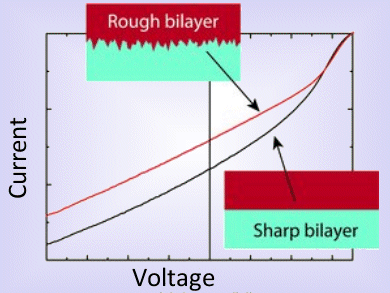Polymeric solar cells have an efficacy of around 3 %, compared to 15–20 % of other solar technologies. Harald Ade and co-workers, North Carolina State University, USA, report that this is due to the structure of the solar cell themselves.
By using resonant soft X-ray scattering, the team studied the interfacial width of the heterojunction at a variety of annealing temperatures. Photoluminescence quenching measurements showed a three-fold increase in the number of excitons dissociated with annealing at over 140 °C. However, device performance was observed to systematically decrease with annealing.
Monte Carlo simulations revealed that a significant portion of the energy is lost due to the inefficient charge separation associated with increased interface roughness. The team conclude that heterojunction sharpness is a requirement for high performance devices.
- Influence of Annealing and Interfacial Roughness on the Performance of Bilayer Donor/Acceptor Polymer Photovoltaic Devices
H. Yan, S. Swaraj, C. Wang, I. Hwang, N. C. Greenham, C. Groves, H. Ade, C. R. McNeill,
Adv. Funct. Mat. 2010, 20.
DOI: 10.1002/adfm.201001292



